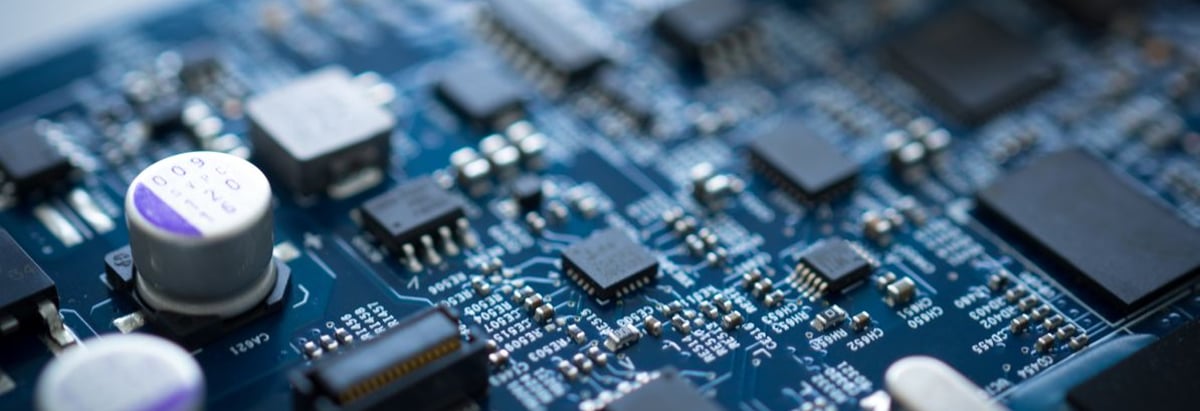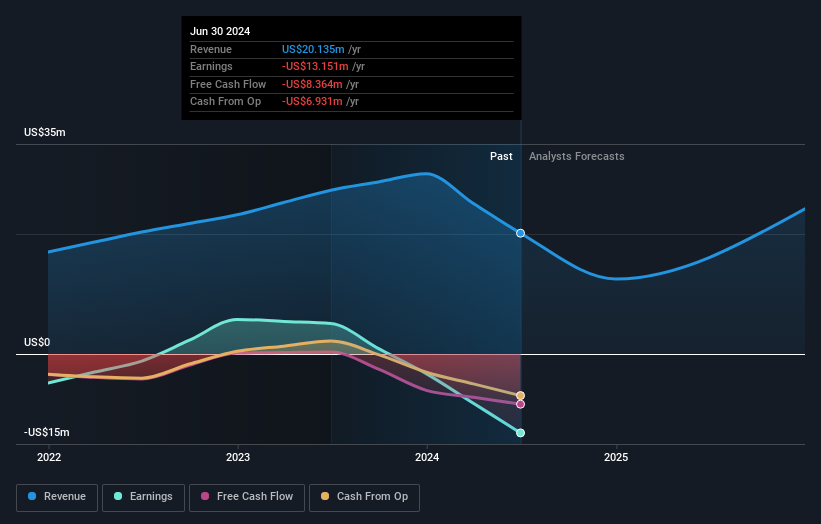- United States
- /
- Semiconductors
- /
- NasdaqCM:LAES
Individual investors who have a significant stake must be disappointed along with institutions after SEALSQ Corp's (NASDAQ:LAES) market cap dropped by US$132m

Key Insights
- The considerable ownership by individual investors in SEALSQ indicates that they collectively have a greater say in management and business strategy
- 42% of the business is held by the top 13 shareholders
- 22% of SEALSQ is held by Institutions
If you want to know who really controls SEALSQ Corp (NASDAQ:LAES), then you'll have to look at the makeup of its share registry. The group holding the most number of shares in the company, around 58% to be precise, is individual investors. That is, the group stands to benefit the most if the stock rises (or lose the most if there is a downturn).
While institutions, who own 22% shares weren’t spared from last week’s US$132m market cap drop, individual investors as a group suffered the maximum losses
In the chart below, we zoom in on the different ownership groups of SEALSQ.
Check out our latest analysis for SEALSQ

What Does The Institutional Ownership Tell Us About SEALSQ?
Institutional investors commonly compare their own returns to the returns of a commonly followed index. So they generally do consider buying larger companies that are included in the relevant benchmark index.
SEALSQ already has institutions on the share registry. Indeed, they own a respectable stake in the company. This suggests some credibility amongst professional investors. But we can't rely on that fact alone since institutions make bad investments sometimes, just like everyone does. It is not uncommon to see a big share price drop if two large institutional investors try to sell out of a stock at the same time. So it is worth checking the past earnings trajectory of SEALSQ, (below). Of course, keep in mind that there are other factors to consider, too.

Hedge funds don't have many shares in SEALSQ. L1 Capital Pty. Limited is currently the largest shareholder, with 22% of shares outstanding. For context, the second largest shareholder holds about 20% of the shares outstanding, followed by an ownership of 0.3% by the third-largest shareholder. Carlos Moreira, who is the third-largest shareholder, also happens to hold the title of Chairman of the Board.
A deeper look at our ownership data shows that the top 13 shareholders collectively hold less than half of the register, suggesting a large group of small holders where no single shareholder has a majority.
Researching institutional ownership is a good way to gauge and filter a stock's expected performance. The same can be achieved by studying analyst sentiments. There is a little analyst coverage of the stock, but not much. So there is room for it to gain more coverage.
Insider Ownership Of SEALSQ
The definition of company insiders can be subjective and does vary between jurisdictions. Our data reflects individual insiders, capturing board members at the very least. The company management answer to the board and the latter should represent the interests of shareholders. Notably, sometimes top-level managers are on the board themselves.
I generally consider insider ownership to be a good thing. However, on some occasions it makes it more difficult for other shareholders to hold the board accountable for decisions.
Our most recent data indicates that insiders own less than 1% of SEALSQ Corp. It seems the board members have no more than US$550k worth of shares in the US$173m company. We generally like to see a board more invested. However it might be worth checking if those insiders have been buying.
General Public Ownership
The general public, who are usually individual investors, hold a substantial 58% stake in SEALSQ, suggesting it is a fairly popular stock. This level of ownership gives investors from the wider public some power to sway key policy decisions such as board composition, executive compensation, and the dividend payout ratio.
Public Company Ownership
Public companies currently own 20% of SEALSQ stock. It's hard to say for sure but this suggests they have entwined business interests. This might be a strategic stake, so it's worth watching this space for changes in ownership.
Next Steps:
I find it very interesting to look at who exactly owns a company. But to truly gain insight, we need to consider other information, too. Be aware that SEALSQ is showing 3 warning signs in our investment analysis , you should know about...
If you are like me, you may want to think about whether this company will grow or shrink. Luckily, you can check this free report showing analyst forecasts for its future.
NB: Figures in this article are calculated using data from the last twelve months, which refer to the 12-month period ending on the last date of the month the financial statement is dated. This may not be consistent with full year annual report figures.
New: Manage All Your Stock Portfolios in One Place
We've created the ultimate portfolio companion for stock investors, and it's free.
• Connect an unlimited number of Portfolios and see your total in one currency
• Be alerted to new Warning Signs or Risks via email or mobile
• Track the Fair Value of your stocks
Have feedback on this article? Concerned about the content? Get in touch with us directly. Alternatively, email editorial-team (at) simplywallst.com.
This article by Simply Wall St is general in nature. We provide commentary based on historical data and analyst forecasts only using an unbiased methodology and our articles are not intended to be financial advice. It does not constitute a recommendation to buy or sell any stock, and does not take account of your objectives, or your financial situation. We aim to bring you long-term focused analysis driven by fundamental data. Note that our analysis may not factor in the latest price-sensitive company announcements or qualitative material. Simply Wall St has no position in any stocks mentioned.
About NasdaqCM:LAES
SEALSQ
Designs, develops, and markets semiconductor chips in Europe, the Middle East, Africa, North America, the Asia Pacific, and Latin America.
Mediocre balance sheet low.
Similar Companies
Market Insights
Community Narratives




